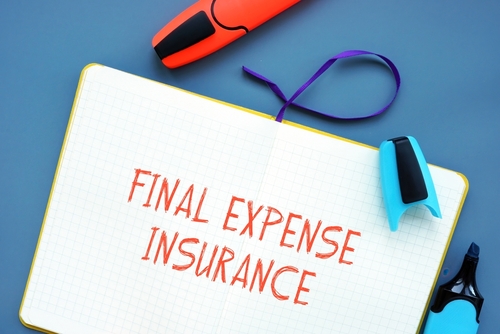Pacific Prime for Dummies
Pacific Prime for Dummies
Blog Article
Everything about Pacific Prime
Table of ContentsThe Only Guide to Pacific Prime5 Easy Facts About Pacific Prime ExplainedThe Main Principles Of Pacific Prime Everything about Pacific Prime
In many states, the insurance company is required to send you a copy of the changes to your plan. It is necessary that you check out Recommendations or Cyclists so you recognize how your policy has transformed and if the policy is still appropriate to meet your demands. To obtain a copy of your insurance plan, please call your insurance coverage representative or company.
The Institute of Medication (IOM) Committee on the Consequences of Uninsurance launches an extended assessment of proof that addresses the relevance of medical insurance coverage with the magazine of this record. Coverage Matters is the initial in a collection of six reports that will be issued over the next 2 years documenting the fact and repercussions of having an approximated 40 million individuals in the USA without medical insurance protection.

3 Simple Techniques For Pacific Prime
The goal of this series of research studies is to refocus plan attention on a longstanding problem. Adhering to the lengthiest financial growth in American background, in 1999, an estimated one out of every 6 Americans32 million adults under the age of 65 and even more than 10 million childrenremains without insurance (Mills, 2000).

10 percent of the population represent 70 percent of wellness care expenses, a connection that has remained continuous over the past three years (Berk and Monheit, 2001) - international travel insurance. Therefore health and wellness insurance coverage remains to offer the function of spreading out danger also as it significantly funds regular treatment. From the point of view of wellness treatment service providers, insurance policy lugged by their clients aids secure a profits stream, and communities gain from monetarily practical and stable healthcare experts and organizations
Federal government gives wellness insurance coverage to populations whom the personal market may not serve successfully, such as disabled and senior citizens, and populaces whose access to healthcare is socially valued, such as children and expecting women. The ultimate ends of health insurance policy protection for the individual and communities, consisting of work environment communities of staff members and companies, are enhanced wellness results and lifestyle.
Rumored Buzz on Pacific Prime
Staff members place health insurance policy initially without a doubt in relevance among all the benefits offered in the workplace (Salisbury, 2001). There have been substantial investments of individual and public funds to give health insurance, numerous people image source still have no coverage. Despite extensive reporting of survey searchings for and healthcare research results, the public remains confused and misinformed about Americans without medical insurance and the ramifications of lacking protection.

Without concern, the complexity of American health and wellness treatment funding devices and the riches of sources of information contribute to the general public's complication and hesitation about medical insurance stats and their analysis. This record and those that will adhere to purpose to boil down and provide in easily reasonable terms the considerable research that bears upon inquiries of health insurance policy coverage and its significance.
Fifty-seven percent of Americans questioned in 1999 believed that those without health and wellness insurance are "able to get the treatment they need from physicians and health centers" (Blendon et al., 1999, p. 207). In 1993, when nationwide focus was concentrated on the troubles of the without insurance and on pending healthcare regulations, simply 43 percent of those questioned held this idea (Blendon et al., 1999).

They additionally obtain fewer preventive services and are less most likely to have regular care for persistent problems such as high blood pressure and diabetes mellitus. Persistent illness can result in pricey and disabling issues if they are not well managed (Lurie et al., 1984; Lurie et al., 1986; Ayanian et al., 2000). One nationwide study asked even more than 3,400 adults about 15 highly severe or somber conditions.
The 10-Second Trick For Pacific Prime
Added evidence is provided later on in this chapter in the discussion of insurance and access to healthcare. https://qualtricsxmxkzkppyv7.qualtrics.com/jfe/form/SV_9u8Yr9IFs6bVle6. People without wellness insurance coverage are young and healthy and select to go without insurance coverage. Practically half (43 percent) of those checked in 2000 thought that people without medical insurance are much more likely to have illness than individuals with insurance
Citizens and plan makers in emphasis team discussions identify those without insurance coverage as young individuals who have the opportunity to be covered and feel they do not require it (Concierge Novelli, 2001). Compared to those with a minimum of some exclusive insurance coverage, the uninsured are much less likely to report being in outstanding or very good health (Company for Medical Care Research and Top Quality, 2001).
SOURCE: Center for Expense and Funding Studies, Agency for Health Care Study and Top quality, based on MEPS data. Young grownups in between 19 and 34 are much more most likely to do not have medical insurance than any various other age team. This is chiefly since they are less typically eligible for employment-based insurance coverage because of the nature of their work or their short tenure in it.
The understanding that individuals without insurance policy have better-than-average health follows from puzzling the fairly young age profile of the uninsured with the far better health, usually, of younger persons. This obscures the web link in between health status and health and wellness insurance coverage. For those without access to workplace medical insurance, bad health and wellness is a prospective barrier to acquiring nongroup protection due to the fact that such insurance coverage might be very priced, leave out pre-existing problems, or be just inaccessible.
Report this page